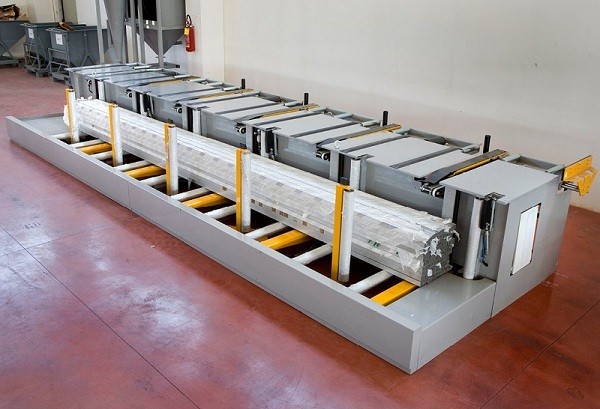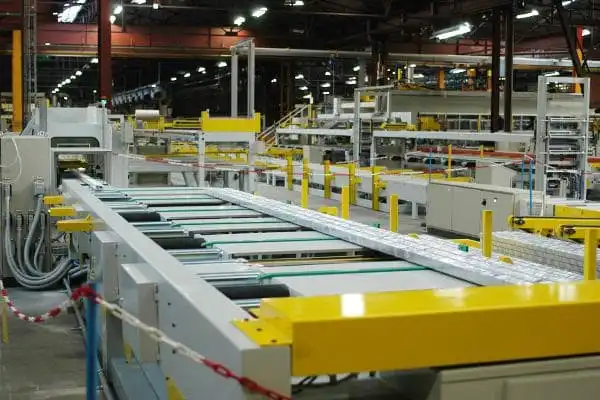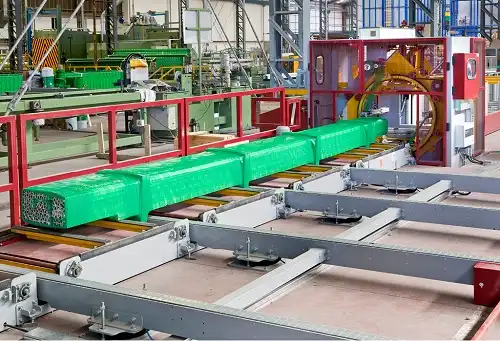Optimizing Your Aluminum Profile Packaging: A Guide to Automated Lines and Solutions
Aluminum profiles, essential components in construction, automotive, and industrial applications, require careful handling and packaging to prevent damage during transport and storage. Scratches, dents, and bending can render profiles unusable, leading to costly waste and delays. Implementing an automated aluminum profile packaging line offers a robust solution to enhance protection, improve efficiency, and ensure product quality.

Explore Aluminum Wrapping Machines
This guide explores the components, benefits, and considerations involved in selecting and implementing an effective packaging solution for aluminum extrusions.
Why Invest in an Automated Aluminum Profile Packaging Line?
Transitioning from manual or semi-automated packaging methods to a fully integrated line provides significant operational advantages:
- Enhanced Product Protection: Automated systems apply protective materials like stretch film, paper, or sleeving consistently, minimizing contact points and reducing the risk of surface scratches, abrasion, and impact damage. Consistent tension control during wrapping prevents bundle distortion.
- Increased Throughput and Efficiency: Automation significantly speeds up the packaging process compared to manual labor. This allows for higher output, reduced bottlenecks, and faster order fulfillment. Labor can be reallocated to other value-added tasks.
- Improved Workplace Safety: Automating the handling, lifting, and wrapping of often long and heavy aluminum bundles reduces the risk of musculoskeletal injuries associated with manual packaging.
- Consistent Package Quality: Automated lines ensure every bundle is packaged according to predefined specifications, leading to uniform package appearance and reliable protection, enhancing customer satisfaction.
- Optimized Material Usage: Precise control over the application of wrapping film, strapping, or paper can lead to reduced material consumption and waste compared to manual methods.
Understanding the Components of an Aluminum Profile Packaging System
A typical Aluminum Profile Packaging Line is modular and can be configured based on specific needs. Common components include:
- Infeed Conveyors: Transport individual profiles or pre-formed bundles into the packaging line. Systems may include profile alignment and spacing mechanisms.
- Bundling/Stacking Stations: Automatically group profiles into desired bundle sizes and configurations. This may involve stacking layers or arranging profiles side-by-side.
- Wrapping Stations: Apply protective layers. Common technologies include:
- Orbital Stretch Wrappers: Wrap bundles circumferentially with stretch film as they pass through a rotating ring. Ideal for long products.
- Spiral Wrappers: Rotate the bundle while applying stretch film longitudinally.
- Sleeving Machines: Apply polyethylene (PE) film sleeves over the bundles.
- Paper Wrapping Units: Apply Kraft paper or VCI (Volatile Corrosion Inhibitor) paper for specific protection needs.
- Strapping Machines: Secure the bundle using PET or PP strapping, often applied after wrapping, to maintain bundle integrity.
- Protective Applicators: Automatically place corner protectors, edge guards, or foam padding at critical points before or during wrapping.
- Labeling and Marking Systems: Apply identification labels, barcodes, or other markings for tracking and inventory management.
- Outfeed and Staging Conveyors: Transport finished bundles to warehousing or shipping areas, potentially integrating with palletizing systems.

aluminum profile paper covering machine Key Technologies in Aluminum Profile Packaging
- Stretch Wrapping: Highly versatile, providing good load containment and protection against dust and moisture. Different film types offer varying levels of puncture resistance and UV protection.
- Strapping: Essential for maintaining the structural integrity of heavy or complex bundles, preventing profiles from shifting.
- Sleeving/Bagging: Offers complete coverage, suitable for profiles requiring high protection against surface scratches or environmental factors. Can be heat-shrunk for a tighter fit.
- Paper Wrapping: Provides a breathable layer of protection, often used for specific surface finishes or when VCI properties are required to prevent corrosion.
Selecting the Right Packaging Line and Solution
Choosing the optimal system requires careful consideration of several factors:
- Profile Characteristics: Analyze the range of profile lengths, widths, shapes, weights, and surface finishes you handle. Sensitive finishes may require non-contact wrapping or specific protective materials.
- Required Throughput: Determine the number of profiles or bundles that need to be packaged per hour or per shift to meet production demands.
- Level of Automation: Decide the degree of automation needed – from semi-automatic standalone machines to fully integrated lines requiring minimal operator intervention.
- Packaging Material Requirements: Identify the most suitable protective materials (film, paper, strapping types) based on protection needs, cost, and environmental considerations.
- Available Floor Space: Assess the physical layout and space constraints within your facility. Modular systems offer flexibility.
- Integration Needs: Consider how the packaging line will integrate with upstream processes (extrusion, finishing) and downstream systems (warehousing, logistics, MES/ERP).
- Budget and ROI: Evaluate the initial investment against the long-term savings from increased efficiency, reduced labor costs, minimized product damage, and lower material waste.
- Supplier Expertise and Support: Partner with a reputable manufacturer or integrator with proven experience in aluminum profile packaging. Ensure they offer reliable installation, training, and after-sales support.

aluminum profile packaging lines Conclusion
An automated aluminum profile packaging line is a strategic investment for manufacturers seeking to protect their products, optimize operations, and maintain a competitive edge. By carefully analyzing production needs and evaluating available technologies, businesses can implement a customized solution that delivers consistent, high-quality packaging while improving overall efficiency and safety. Choosing the right system tailored to your specific profiles and operational requirements is key to maximizing the return on this important investment.
